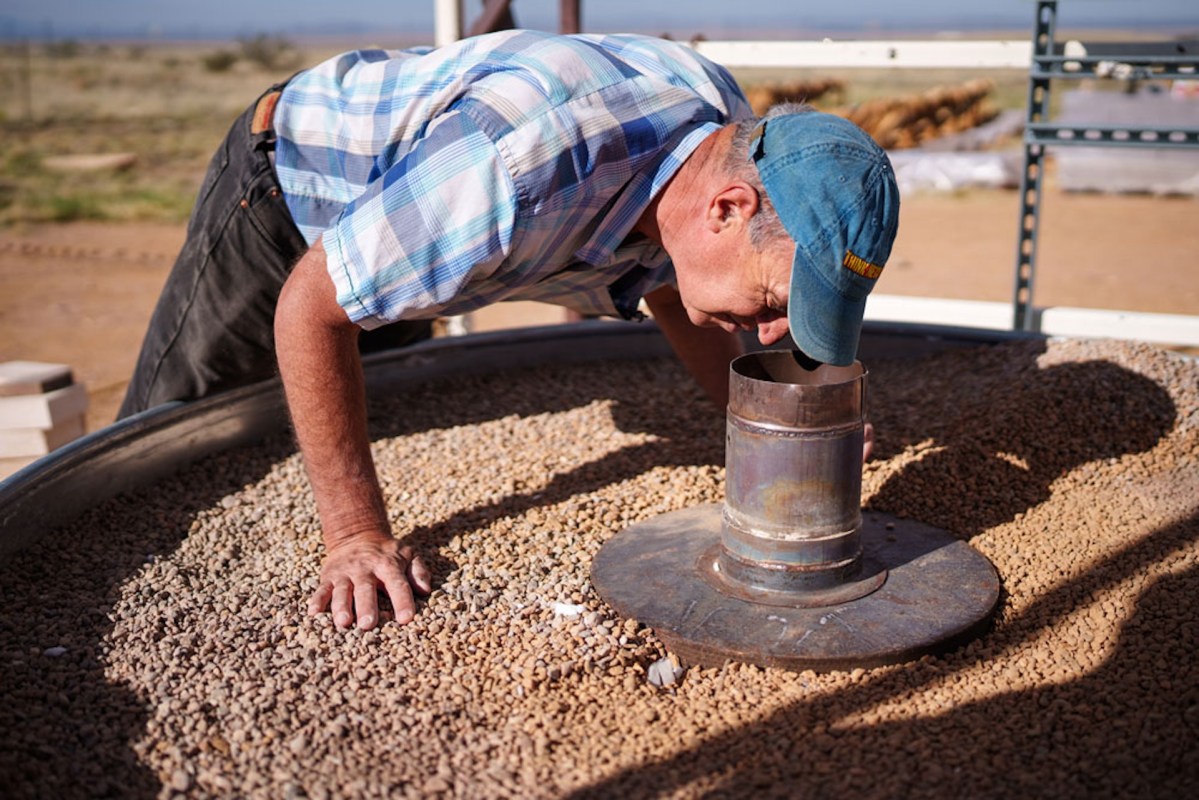The transition to clean energy may be getting an unexpected assist from a popular landscaping tool.
As detailed by Tech Briefs, engineers at Sandia National Laboratories partnered with CSolPower LLC to develop a prototype that stores thermal heat with gravel. After being heated to 932 degrees Fahrenheit, the gravel was able to maintain high temperatures for 20 hours.
"The rocks have so much surface area, you're blowing through what is basically a big sponge — it's a lot of area for the heat transfer," mechanical engineer Nathan Schroeder explained.
Sandia's prototype had an efficiency rate of 85-90% on initial tests, which was slightly lower than another promising pebble storage system created by researchers in Sweden. However, they believe their design hasn't revealed its full potential.
"Because this is a smaller prototype, you end up with an unfavorable ratio of the volume of gravel to its overall surface area. That results in a larger percentage of heat loss relative to the amount of energy you can store. If you made this really big … you would start to look at round-trip efficiencies upward of 95%, maybe even higher," Sandia engineer Luke McLaughlin told the outlet.
Energy storage for renewables is important because solar and wind aren't generated around the clock. Spikes in demand could also put stress on a clean-energy grid if a storage system isn't in place.
Liquid tin, sulfur, and hydrogen are among the potential solutions researchers have been working on, but the low cost of gravel makes this an exciting development. Sandia's method could provide a roadmap to ensure affordable, non-polluting energy is reliably available to an even greater number of people as the world moves away from a dirty energy grid.
"The installed cost for our thermal storage system is less than $5-10 per kWh thermal, as compared to other energy-storage technologies, which are in the range of $150-$200 per kWh electric," McLaughlin said.
Sandia also found that minimal preparation was needed for its system to effectively operate, with Schroeder stating in a press release that "extensive washing" of the landscaping gravel wasn't required.
According to that release, prototype testing is scheduled to continue through June of this year, and so far, things have been going as planned. After the initial phase of testing is complete, the project will be scaled up even further, with partner CSolPower hoping to introduce the technology as a commercial storage solution over the next one or two years, per Tech Briefs.
For its part, Sandia has several greenhouses in New Mexico waiting to try out the technology.
"That's something that can use a lot of electricity. So, you can put up solar panels, install our storage system and be able to heat the greenhouse overnight with energy collected during the day," McLaughlin told Tech Briefs.
Join our free newsletter for weekly updates on the coolest innovations improving our lives and saving our planet.









